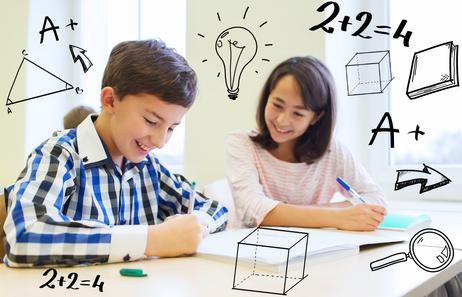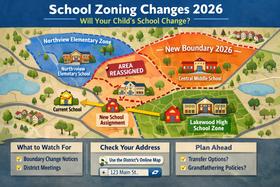Being a teacher is one of the most difficult careers out there – it may also be one of the most thankless. Though there are certainly teachers out there who make the minimum amount of effort to keep their jobs, there are also plenty of teachers who take their roles as educators very seriously and who make it their life’s mission to improve the lives of their students. Regardless, there is no denying that teaching is a challenging job and the challenges seem to change with each passing year. Keep reading to learn about the top ten challenges facing public school teachers this year.
Top 10 Challenges for Public School Teachers in 2017
Though it is difficult to be a teacher in any capacity, public school teachers face an entirely different set of challenges than private school teachers. According to the National Center for Education Statistics, there are more than 50 million students enrolled in the public school system in the United States each year. Public schools typically have larger class sizes and less flexibility in regard to the curriculum than private schools – plus, they are subject to more rules and regulations than private schools. All of these things combine to create a unique set of challenges – here are the top ten:
1. Technology
Technology is rapidly improving and it has begun to proliferate every aspect of the average person’s daily life, including his education. Though technology can do some wonderful things, some teachers find it challenging to keep up with the latest advances and to utilize them effectively for educational purposes. Furthermore, many public school districts simply don’t have the funds to equip their classrooms with modern technology which leaves teachers to do their best with limited resources and unreliable equipment. As technology becomes more readily available, however, it is becoming one of the best ways to capture a student’s attention – if a school doesn’t have the funds or the knowledge to use technology for the benefit of its students, those students may fall behind.
This video describes five technologies which will change classroom teaching.
2. Politics
With changes in political office come changes in educational standards and requirements. Some politicians push for more standardization while others do not. To a certain degree, it is simply luck of the draw what kind of educational climate a teacher is forced to work with in public school.
3. Common Core State Standards
Changes in educational standards are always a hot button issue, especially when some states support them and others do not. There are also Next Generation Science Standards to consider. As a teacher, it becomes necessary to not only keep up with the changing rules and regulations but to ensure that you are meeting educational standards at all times. Sometimes those standards seem to directly oppose what is best for the students and it is a teacher’s job to strike the right balance.
4. Literacy Rates
Elementary school students start school at varying levels of preparedness. There are those students whose parents have already taught them to read at home but also students who are not prepared for public education in any way. Children who come from impoverished backgrounds often start at an academic disadvantage and it is the teacher’s job to catch them up to speed without compromising the education of students who are more advanced.
5. Bullying
Bullying has always been a problem in schools but advances in modern technology have taken it to new heights. Not only do children bully others on school grounds, but they do so on social media as well. According to recent research, as many as one in three teens report that they have been a victim of bullying via the internet or cell phones. Teachers can only do so much to stop bullying in its tracks, especially when it leaves school grounds and takes to the Internet. Many schools are writing cyberbullying policies into their handbooks and requiring students to sign contracts that allow teachers and administrators to enforce those policies and to administer punishments for bullying that takes place over the Internet, even away from school grounds.
6. Parent Involvement
The level to which a student’s parents become involved in the child’s education is extremely important. Students need a safe home environment that is conducive to learning where they can do their homework and complete their studies. In households where the parents are uninvolved, students are more likely to fall behind. Conversely, some parents become overinvolved in their child’s life and education. As a teacher, it becomes necessary to fill in the gaps that a parent leaves or to help temper an overenthusiastic parent’s actions for the benefit of the student.
7. Poverty
Though there are certainly public schools in more affluent areas of the country, many children who attend public school come from low-income families who live at or below the federal poverty level. Families USA defines poverty as an income below $24,600 for a family of four, as of 2017. Students who live around the poverty level face a number of unique challenges that carry over into their academics and which may also affect their teachers. For example, students from low-income families have higher dropout rates, especially when they don’t have a strong leader in their lives to encourage them to continue their education. Students who do not get enough sleep or food tend to perform below their academic potential, and that can set them up for a difficult life. Teachers who serve low-income students often find themselves providing their students with personal or even financial support in addition to their educational responsibilities.
8. Funding
Being a teacher is no easy task, especially in the public school system. With increasing classroom sizes and decreasing budgets, teachers are forced to do more with less. Many schools simply don’t have the funding to provide every student with the books or supplies they need and, in some cases, those uncovered expenses fall upon the shoulders of teachers. According to Time.com, the average teacher spends nearly $500 on school supplies and 10% of teachers spent more than $1,000. In total, as much as $1.6 billion in school supply costs are shifted from the schools or parents onto the teachers themselves.
9. Lack of Support
A child’s education doesn’t start when he enters the classroom and pause until he re-enters it the next day – it is an ongoing thing, day in and day out. While teachers are responsible for most of a child’s education, students need support from their parents and teachers need support from their administrators and from the district to ensure that each student receives a quality education. In many public school systems, administrators are so bogged down by paperwork and red tape that they aren’t able to offer their teachers the support they need to be excellent educators. Additional challenges like curriculum requirements, state standards, and budget cuts make a teacher’s job even more difficult.
10. Classroom Size
Though every school is different, many public schools have much larger classroom sizes than private schools and fewer teachers and support staff to manage them. Budget cuts are a constantly looming threat for public schools and as more teachers lose their jobs, the teachers that remain must take up the mantle. Unfortunately, increasing classroom sizes often correlates with a reduced quality of education – many teachers feel as though they spend more time dealing with conflicts or trying to maintain control over their students than they do teaching. Large classrooms also make it difficult for teachers to provide gifted students or students who have learning challenges with the individual attention they need.
Questions? Contact us on Facebook. @publicschoolreview












